Hermit Crabs and Snail Shells: A Comprehensive Guide to Their Unique Relationship
Hermit crabs and Snail Shells are extraordinary creatures that rely on empty snail shells for survival. Unlike most crabs, hermit crabs have soft, vulnerable abdomens that need protection from predators and environmental dangers. A snail shell acts as their portable home, providing safety and moisture retention. This unique adaptation showcases the crab’s resourcefulness and ability to thrive in diverse environments.
But what happens when a hermit crab outgrows its shell? As they grow, hermit crabs must find larger shells, often engaging in “shell swaps” with other crabs. This quest for a new home highlights a fascinating behavior where hermit crabs evaluate and sometimes even compete for the best available shells. Without a suitable shell, a hermit crab becomes highly vulnerable, emphasizing the critical importance of these discarded snail homes.
In nature, the relationship between hermit crabs and snail shells is a form of commensalism. The hermit crab benefits immensely by gaining protection and mobility, while the original snail, having vacated the shell upon its death, neither benefits nor is harmed. This ecological recycling demonstrates the interconnectedness of marine ecosystems.
Beyond their shells, hermit crabs are omnivores with a varied diet. They enjoy fruits, vegetables, protein sources like cooked chicken or fish, and even specialized commercial hermit crab food. Calcium is also essential for their exoskeletons, making crushed eggshells or cuttlebone great dietary supplements. Paired with access to fresh and saltwater pools, a balanced diet supports their health and longevity.
Speaking of longevity, did you know hermit crabs can live up to 30 years in the wild? However, in captivity, their lifespan typically ranges from 5 to 15 years with proper care. Factors like diet, habitat quality, and access to appropriately sized shells all influence their life expectancy.
Creating a suitable habitat is crucial for pet hermit crabs. A 10-gallon tank with sand or coconut fiber substrate provides a comfortable environment. Maintaining a warm temperature of 75-85°F and a humidity level of 70-80% is vital for their well-being. Adding hiding spots, climbing structures, and extra shells ensures a stimulating and secure habitat.
Hermit crabs also form fascinating relationships with other species, such as sea anemones. In a mutualistic bond, the anemones attach to the crab’s shell, offering protection with their stinging tentacles while benefiting from mobility and food scraps provided by the crab.
From their diet and habitat to their remarkable dependence on snail shells, hermit crabs reveal the wonders of adaptation and interdependence in nature. These tiny, resourceful creatures remind us of the beauty and complexity of the natural world.
What Do Hermit Crabs Eat?
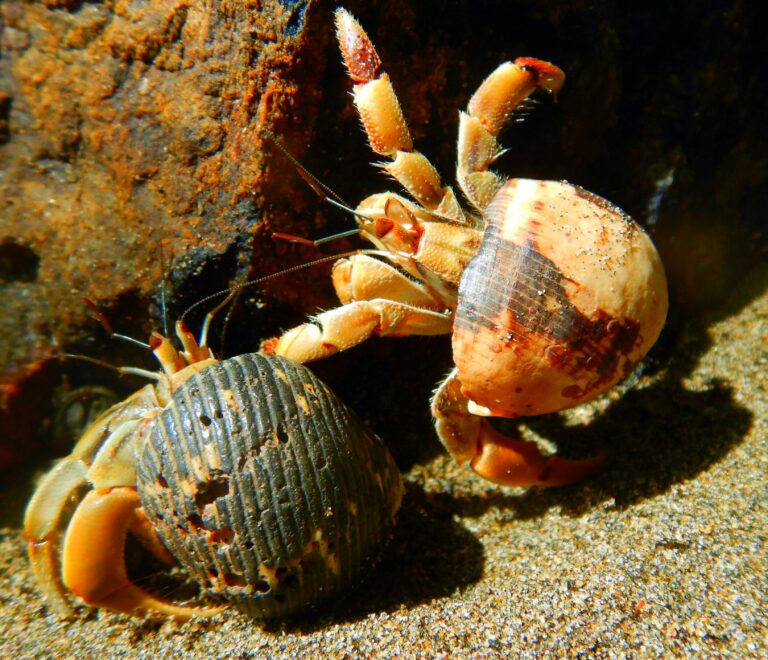
Hermit crabs aren’t picky eaters, making them relatively easy to care for. They are omnivores, which means they eat both plant-based and meat-based foods. Here’s a breakdown of their diet:
Fruits and Vegetables: Hermit crabs enjoy apples, bananas, carrots, and leafy greens like spinach and kale.
Protein Sources: They love small pieces of cooked chicken, fish, or boiled eggs. Shrimp and krill are also great options.
Commercial Hermit Crab Food: Specially formulated pellets or powders are widely available and provide balanced nutrition.
Calcium: Crushed eggshells, cuttlebone, or calcium powder help them maintain strong exoskeletons.
Make sure to provide fresh, dechlorinated water and avoid processed or salty foods—they’re harmful to your little crab buddies!
The Hermit Crab and Snail Shell Relationship

One of the most remarkable aspects of hermit crabs is their dependency on empty snail shells for survival. This relationship is a perfect example of how nature adapts to ensure survival. Hermit crabs have soft, unprotected abdomens that make them vulnerable to predators and harsh environmental conditions. Unlike most crabs, which have hard exoskeletons covering their entire body, hermit crabs must seek external protection. Enter the snail shell—a discarded home that becomes a lifeline for these resourceful creatures.
When a hermit crab finds an empty snail shell, it carefully inspects it to ensure it’s the right size and shape. A good shell not only provides a snug fit but also ensures the crab can retreat entirely inside to stay safe from threats. As hermit crabs grow, they periodically need to find larger shells. This natural recycling of resources showcases the interconnectedness of marine ecosystems.
However, this dependency also highlights the challenges hermit crabs face. In areas where empty snail shells are scarce, hermit crabs may resort to using alternative objects like bottle caps or other debris, which may not provide the same level of protection.
The relationship between hermit crabs and snail shells also has broader ecological implications. By using and eventually abandoning shells, hermit crabs contribute to the habitat diversity of the seabed. Empty shells left behind can become homes for other small marine organisms, continuing the cycle of resource sharing in the ocean.
From their meticulous selection process to their role in promoting biodiversity, the hermit crab and snail shell relationship is a testament to nature’s ingenuity. It’s a reminder of how even the smallest creatures play significant roles in the delicate balance of ecosystems.
Why Do Hermit Crabs Need Shells?
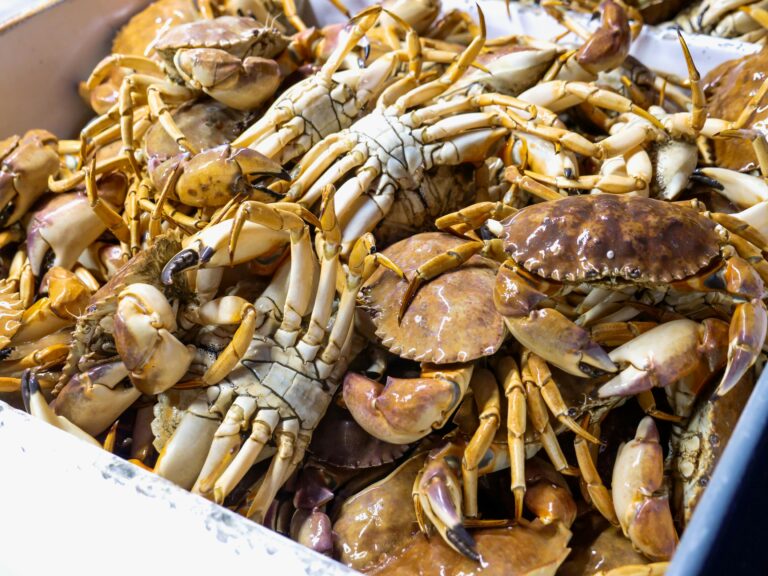
Hermit crabs are unique creatures that depend on shells for their survival. Unlike other crabs, they have soft, delicate abdomens that leave them exposed to predators and environmental risks. To stay safe, hermit crabs find and use empty snail shells as portable homes. These shells act as their armor, shielding their fragile bodies from harm.
Without a shell, a hermit crab is left unprotected, making it highly vulnerable to predators, harsh weather, and even dehydration. The shell isn’t just a home—it’s a lifesaving necessity. That’s why hermit crabs are always on the lookout for the perfect shell, often upgrading to larger ones as they grow. It’s a fascinating adaptation that ensures their survival in the wild!
Symbiotic Relationship Between Hermit Crabs and Snail Shells
The relationship between hermit crabs and snail shells can be categorized as commensalism. Here’s why:
Snails: Once a snail dies, its empty shell becomes a shelter for a hermit crab.
Hermit Crabs: They don’t harm the snail to get the shell but benefit immensely from its existence.
This relationship doesn’t directly benefit the snail, but the reuse of shells highlights the interconnectedness of marine ecosystems.
The Role of Gastropod Shells
Hermit crabs predominantly use shells from gastropods (snails). These shells are:
Lightweight and Durable: Ideal for easy mobility and long-term protection.
Varied in Size: As hermit crabs grow, they’ll search for larger shells to accommodate their increasing size.
Recycled: In a fascinating ecological process, shells are reused by multiple hermit crabs over time.
Can Hermit Crabs Survive Without a Shell?
No, hermit crabs cannot survive without a shell for long. Being shell-less leaves them:
Exposed to Predators: Their soft abdomens are easy targets.
At Risk of Dehydration: Shells help them retain moisture, which is vital for their survival.
If a hermit crab loses its shell, it will desperately seek a new one, even engaging in “shell fights” with other crabs over a suitable home.
The Hermit Crab Tank Setup
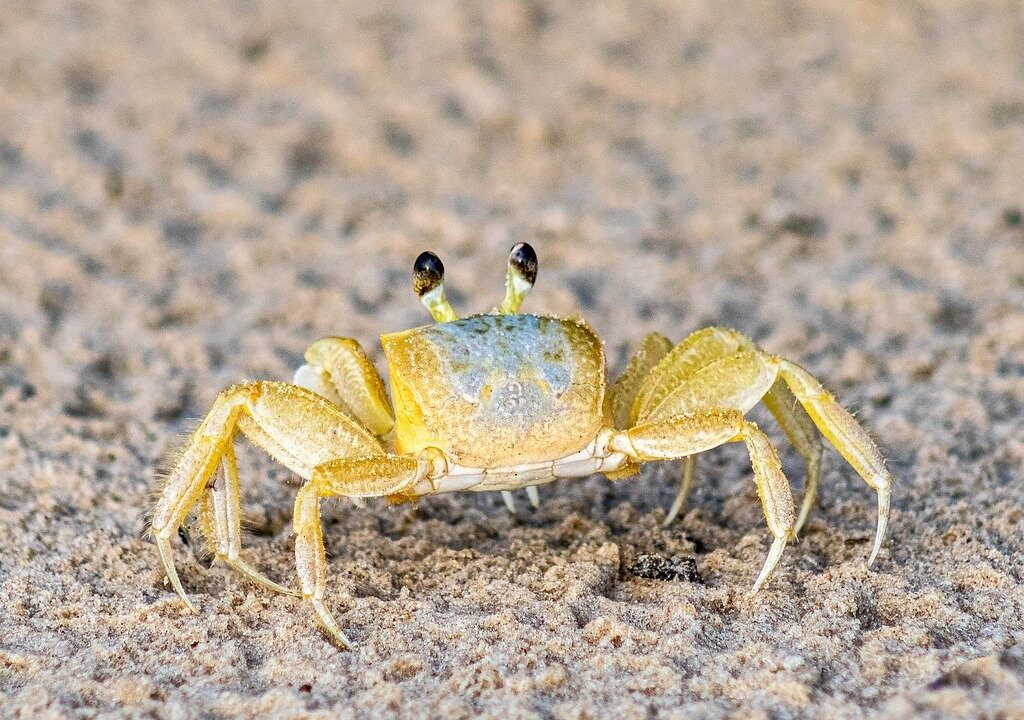
Creating the perfect habitat for hermit crabs is essential for their well-being. Here are the basics:
Tank Requirements
Size: A 10-gallon tank is suitable for 2-3 hermit crabs.
Substrate: Use sand or coconut fiber deep enough for burrowing.
Temperature: Maintain a warm environment (75-85°F).
Humidity: Ensure 70-80% humidity to keep their gills moist.
Tank Decor
Hiding Spots: Add coconut huts, driftwood, or rocks.
Shells: Provide multiple shells of various sizes for when your crabs need to “upgrade.”
Fresh and Saltwater Pools: Hermit crabs need both for drinking and bathing.
How Long Do Hermit Crabs Live?
In the wild, hermit crabs can live up to 30 years. However, in captivity, their lifespan typically ranges from 5-15 years with proper care. Factors influencing their lifespan include:
Diet: A balanced diet supports their health and longevity.
Habitat: A well-maintained tank reduces stress and promotes a long life.
Shell Availability: Access to appropriately sized shells ensures continued growth.
Symbolism of Hermit Crab and Snail Shell Relationship
The hermit crab’s reliance on snail shells often symbolizes:
Adaptability: The ability to use resources efficiently.
Interdependence: A reminder of how species coexist in ecosystems.
Resilience: Thriving despite vulnerabilities.
Fun Facts About Hermit Crabs
Hermit crabs can “smell” potential shells from a distance.
They often engage in “shell swapping” gatherings to trade for better homes.
Hermit crabs have been known to use man-made objects like bottle caps as temporary shells.
Some species live on land, while others are aquatic.
Hermit crabs grow by molting, shedding their exoskeleton to make room for growth.
Hermit Crabs and Sea Anemones: A Unique Friendship
Did you know that some marine hermit crabs have a fascinating relationship with sea anemones? It’s a partnership where both creatures benefit, making their bond truly special.
How It Works
For Hermit Crabs: The sea anemone’s stinging tentacles act like a built-in security system. Predators that might try to snack on the hermit crab are deterred by the anemone’s stings, giving the crab extra protection.
For Sea Anemones: The hermit crab isn’t the only one who gains something from this relationship. By hitching a ride on the crab’s shell, the sea anemone gets mobility it wouldn’t otherwise have. This allows it to access more food, including scraps from the hermit crab’s meals.
Why It’s Special
This partnership, called a mutualistic relationship, is a win-win for both creatures. The hermit crab gets a bodyguard, while the sea anemone enjoys a traveling buffet. It’s an incredible example of how different species can work together to survive in the wild.
Next time you spot a hermit crab with a sea anemone attached to its shell, remember—it’s not just a hitchhiker. It’s a valuable partner in the ocean’s fascinating ecosystem!
Hermit Crab Lifespan and Care Tips
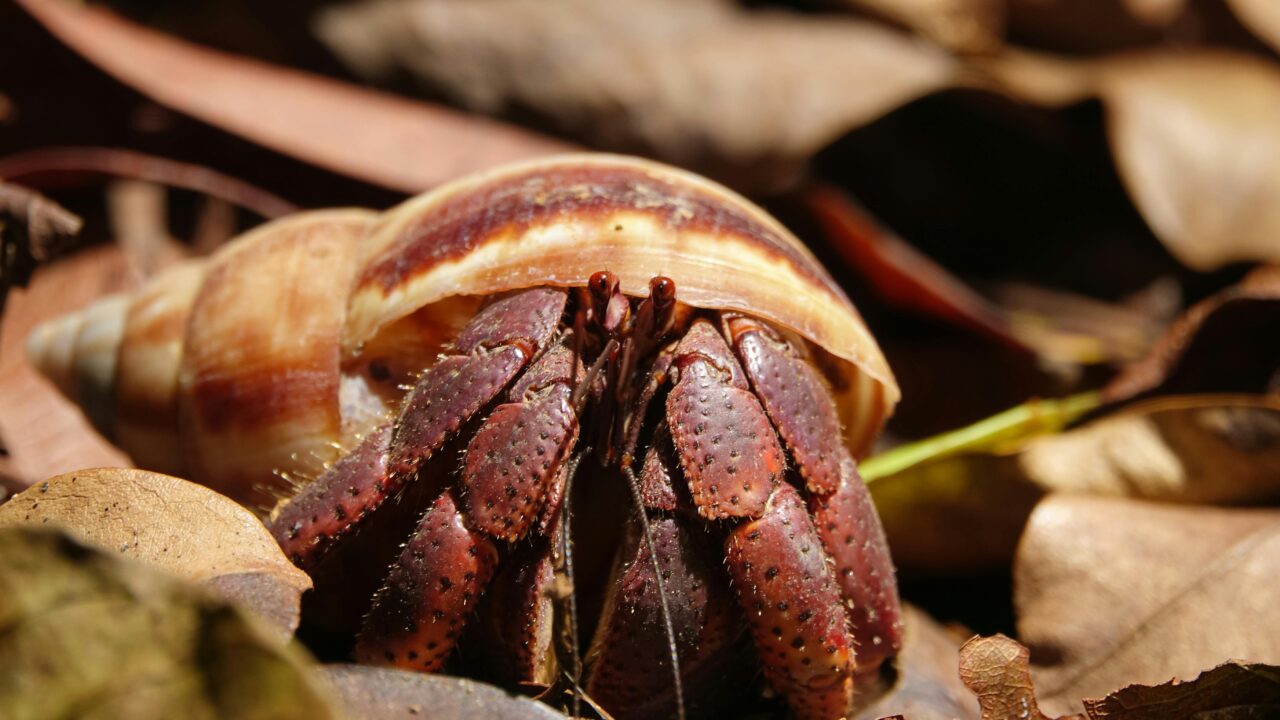
Hermit crabs can be delightful and fascinating pets, and with the right care, they can live for many years—sometimes even up to 10–15 years in captivity! To help your hermit crab thrive and live a long, healthy life, here are some essential care tips:
1. Offer a Balanced Diet
Hermit crabs need a variety of foods to stay healthy. Their diet should include:
Fresh fruits and vegetables (like apples, carrots, or spinach).
Protein-rich options such as dried shrimp or boiled egg.
Calcium sources like crushed eggshells or cuttlebone to strengthen their exoskeleton.
Make sure to remove uneaten food daily to keep their habitat clean and prevent mold or bacteria.
2. Maintain a Clean and Humid Habitat
Hermit crabs rely on a humid environment to breathe properly. Their enclosure should have:
Humidity levels between 70–80% (use a hygrometer to monitor).
Clean sand or coconut fiber substrate for burrowing.
Freshwater and saltwater dishes, as they need both to stay hydrated and healthy.
Regularly clean their tank, removing waste and debris, but avoid using harsh chemicals that can harm your crabs.
3. Provide Appropriately Sized Shells
Hermit crabs grow over time and will need larger shells to move into. Always have a variety of shells available in their habitat, ensuring they have options that are clean, intact, and free of paint or harmful coatings. The right shell reduces stress and keeps your crab safe.
4. Handle with Care
Hermit crabs are delicate and can easily get stressed if mishandled. When picking them up:
Be gentle and support their body.
Avoid sudden movements that could frighten them.
Limit handling to reduce stress and allow them to feel secure in their environment.
Where to Buy Hermit Crabs
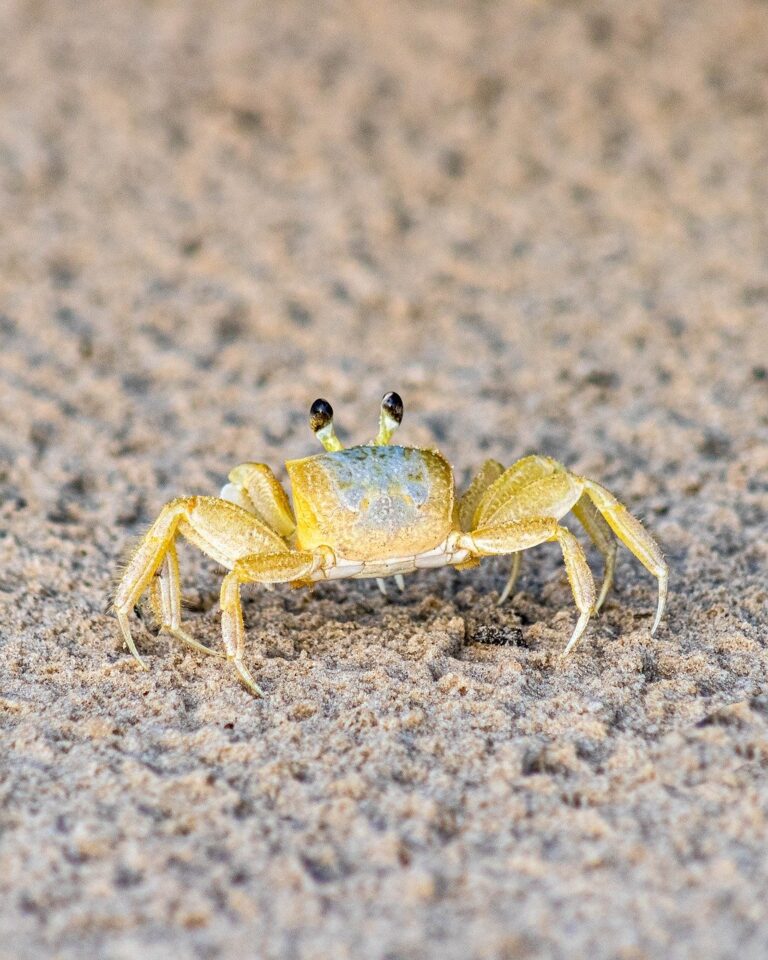
If you’re thinking about adding hermit crabs to your family, it’s important to know where to find them and how to ensure you’re making a responsible choice. Here are some options to consider:
1. Pet Stores
Many pet stores carry hermit crabs, but it’s crucial to choose a store that prioritizes the health and well-being of its animals. Look for stores where the crabs are active, healthy, and kept in clean, properly maintained enclosures. Pay attention to signs of good care, such as:
Freshwater and saltwater dishes available in their habitat.
A variety of shells for them to choose from.
Proper substrate for burrowing.
Ask the staff about their care practices and the crab’s origin to ensure you’re supporting ethical pet sourcing.
2. Reputable Breeders or Sellers
For a more responsible choice, consider buying hermit crabs from reputable breeders or specialized sellers. These individuals often prioritize ethical practices, ensuring the crabs are healthy and not taken from the wild in harmful ways. Avoid supporting sellers who contribute to unsustainable harvesting practices that harm wild hermit crab populations.
3. Local Hermit Crab Enthusiast Groups or Forums
Sometimes, hermit crabs are rehomed by people who can no longer care for them. Check local online forums, social media groups, or hermit crab enthusiast communities. This option not only gives you a chance to adopt but also helps a crab in need find a new home.
What to Look For When Buying Hermit Crabs
Regardless of where you decide to buy, here are some key things to check:
Active and Healthy Crabs: Look for crabs that are moving around and responding to touch. Avoid any that seem lethargic or have visible injuries.
Intact Limbs: Make sure the crab has all its legs and claws, as missing limbs can be a sign of stress or poor care.
Clean Shells: Healthy crabs often have clean, intact shells that fit them well.
By carefully selecting where to buy your hermit crabs, you can ensure they come from a responsible source and set them up for a happy, healthy life in their new home.
Conclusion
Hermit crabs are a perfect example of the beauty and brilliance of nature’s designs. Their connection to snail shells shows how resourceful they are, using these “borrowed homes” to stay safe and survive. Their unique relationship with sea anemones adds another layer to their fascinating story, showcasing how different creatures work together in harmony.
From their adaptable diets to their quirky behaviors, hermit crabs are truly one-of-a-kind. With the right understanding and care, you can help these amazing little creatures thrive while enjoying their curious and charming personalities. Owning a hermit crab isn’t just about having a pet—it’s about witnessing and being part of their incredible journey.

